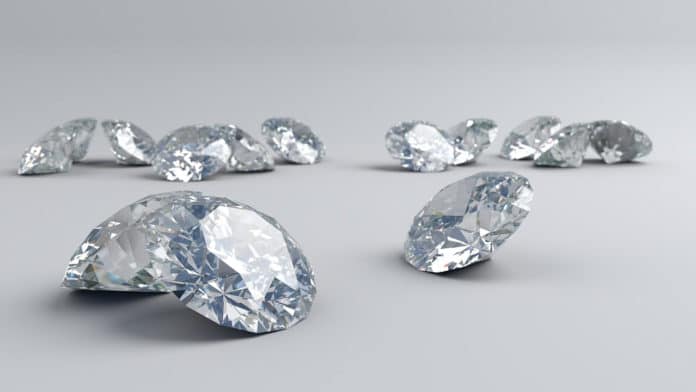Their tightly bonded arrangement makes diamonds one of the hardest substances on Earth. In a diamond, the four carbon atoms are shared with four other carbon atoms to form very strong chemical bonds, resulting in an extremely rigid tetrahedral crystal. It is this simple, tightly bonded arrangement that makes diamonds one of the most complex substances on Earth.
In contrast, hexagonal diamonds that have six-sided crystal structures- are found at some meteorite impact sites. Unlike other diamonds that have been made briefly in labs, these hexagonal diamonds are either too small or had too short of existence to be measured.
Now, scientists at Washington State University‘s Institute for Shock Physics- for the first time- have created hexagonal diamonds in the lab. These human-made hexagonal diamonds are stiffer than the common cubic diamonds found in nature and are often used in jewelry. What’s more, they are large enough to measure their stiffness using sound waves.
Yogendra Gupta, director of the Institute for Shock Physics and corresponding author on the study, said, “Diamond is a unique material. It is not only the strongest—it has beautiful optical properties and a very high thermal conductivity. Now we have made the hexagonal form of diamond, produced under shock compression experiments, that is significantly stiffer and stronger than regular gem diamonds.”
For this study, scientists used gunpowder and compressed gas to propel small graphite disks about a dime’s size at a speed of around 15,000 miles per hour onto a transparent material. The impact produced shockwaves in the disks that very rapidly transformed them into hexagonal diamonds.
Right after this impact, scientists produced a small sound wave. Using lasers, they measured the wave moves through the diamond and found that it moved faster through the hexagonal diamonds.
Each process takes several billionths of a second or nanoseconds, but scientists could make the stiffness measurements before the high-velocity impact destroyed the diamond.
Lead author Travis Volz, now a post-doctoral researcher at Lawrence Livermore National Laboratory, said, “Generally stiffer materials are also harder. While it is not possible to scratch the diamonds to test hardness directly, it is possible to make inferences about their hardness.”
Gupta said, “While the industrial advantages are clear, it is still possible hexagonal diamonds could one day be used on engagement rings. Currently, lab-made cubic diamonds have less value compared to their natural peers, but hexagonal diamonds would likely be more novel.”
“If someday we can produce them and polish them, I think they’d be more in demand than cubic diamonds. If somebody said to you, ‘look, I’m going to give you the choice of two diamonds: one is a lot rarer than the other one.’ Which one would you pick?“
“Hard materials are useful for machining capabilities. Diamond has been used for a long time in drill bits, for example. Since we found that the hexagonal diamond is likely harder than the cubic diamond, it could be a superior alternative for machining, drilling, or any application where the cubic diamond is used.”
Journal Reference:
- Travis J. Volz et al., Elastic moduli of hexagonal diamond and cubic diamond formed under shock compression, Physical Review B (2021). DOI: 10.1103/PhysRevB.103.L100101
